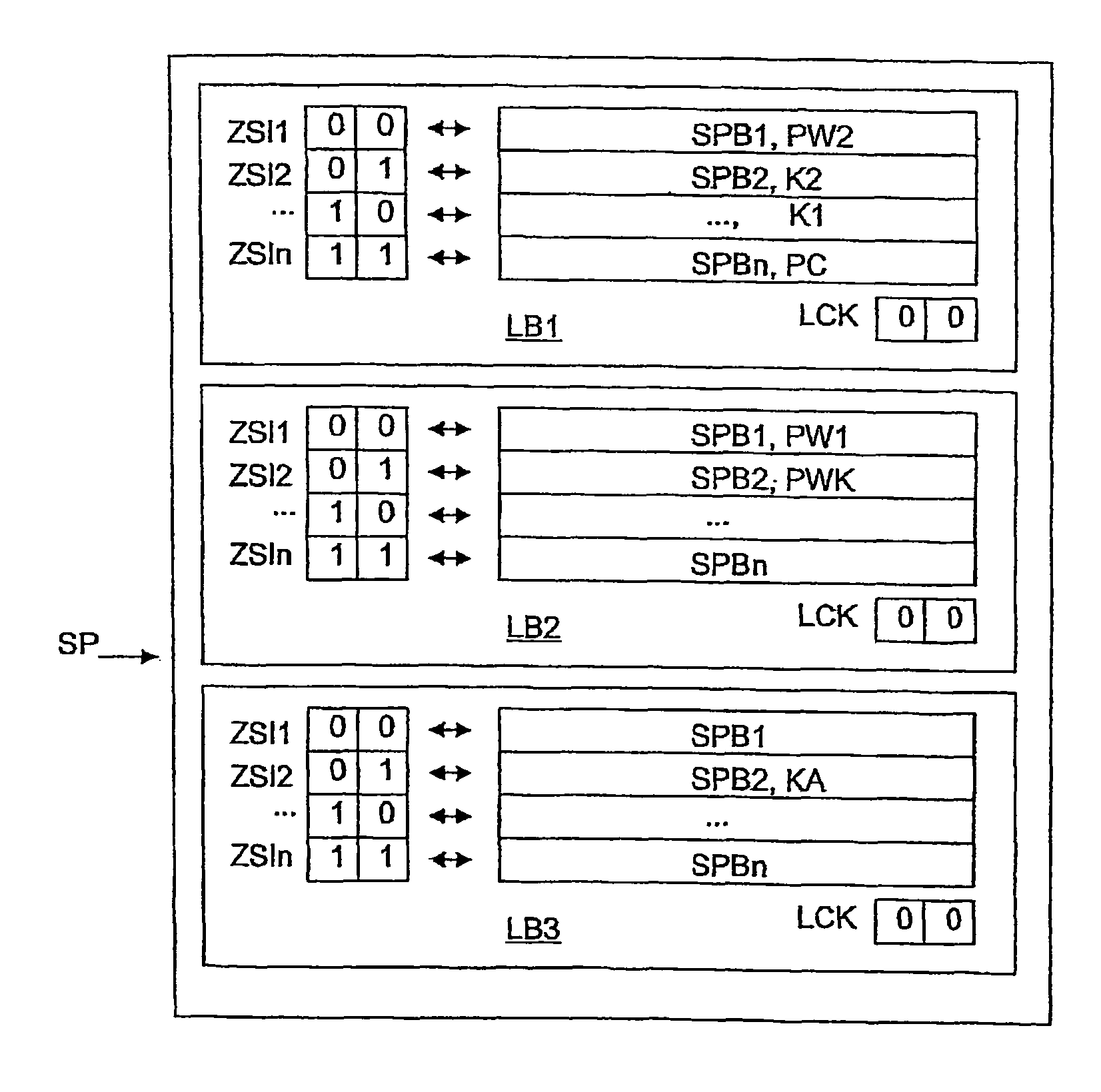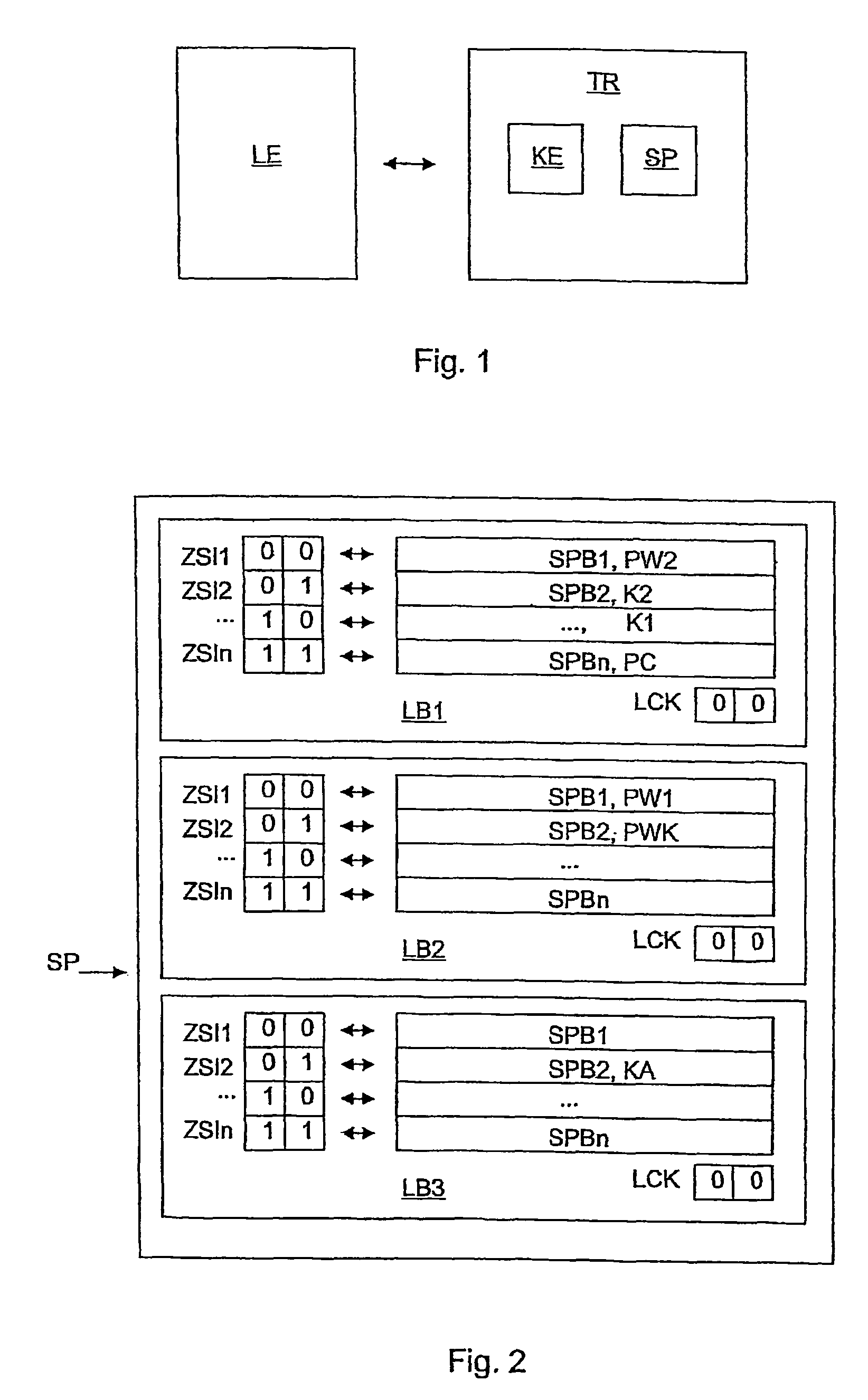Method for access control
a technology of access control and access control, applied in the direction of program control, testing/monitoring control system, instruments, etc., can solve the problems of security risk, read access to passwords can also be barred, and the transmission of epc upon request to the reader unit holds certain risks, so as to achieve efficient memory utilization and powerful and flexible access control. , the effect of efficient memory utilization
- Summary
- Abstract
- Description
- Claims
- Application Information
AI Technical Summary
Benefits of technology
Problems solved by technology
Method used
Image
Examples
Embodiment Construction
[0024]FIG. 1 shows schematically a block diagram of an RFID system with a base station or reader unit LE and a passive backscatter-based transponder TR, which are each configured, for example, such that in their basic functions they operate in conformity with ISO / IEC_CD 18000-6C of 7 Jan. 2005. The transponder TR comprises, in addition to other conventional functional units (not shown), a nonvolatile memory SP and a cryptography unit KE.
[0025]FIG. 2 shows a memory map of the memory SP of the transponder TR as shown in FIG. 1. The physical memory SP is divided into logic memory areas or memory banks LB1 to LB3, which are used as the address specification or index during memory access by the reader unit LE to the transponder TR. In addition to the indicated memory areas, further memory areas may be provided, which are not shown here.
[0026]The logic area LB1 is used to store a first identification K1 in the form of an electronic product code EPC, a second identification K2, and protoco...
PUM
 Login to View More
Login to View More Abstract
Description
Claims
Application Information
 Login to View More
Login to View More - R&D
- Intellectual Property
- Life Sciences
- Materials
- Tech Scout
- Unparalleled Data Quality
- Higher Quality Content
- 60% Fewer Hallucinations
Browse by: Latest US Patents, China's latest patents, Technical Efficacy Thesaurus, Application Domain, Technology Topic, Popular Technical Reports.
© 2025 PatSnap. All rights reserved.Legal|Privacy policy|Modern Slavery Act Transparency Statement|Sitemap|About US| Contact US: help@patsnap.com


